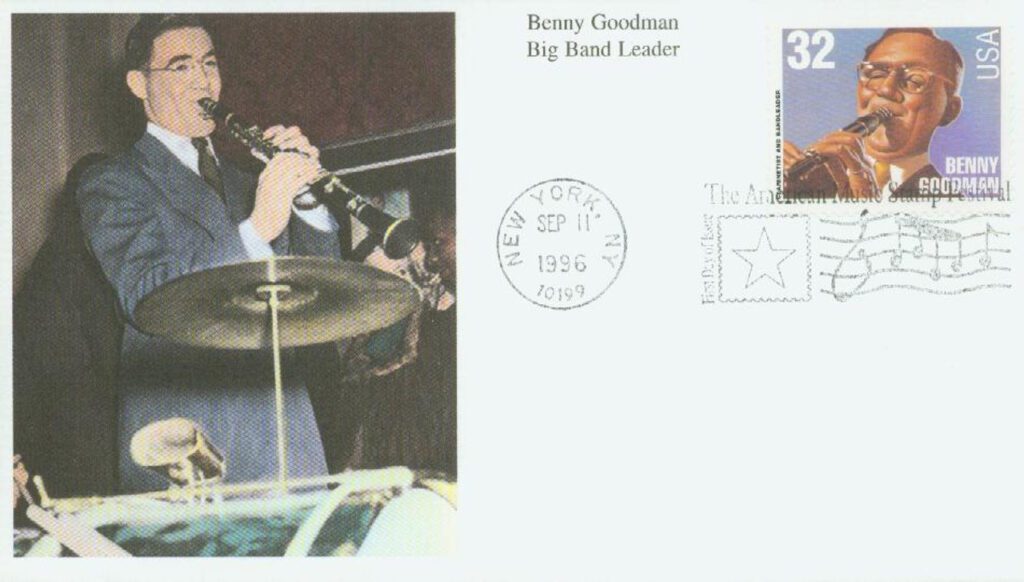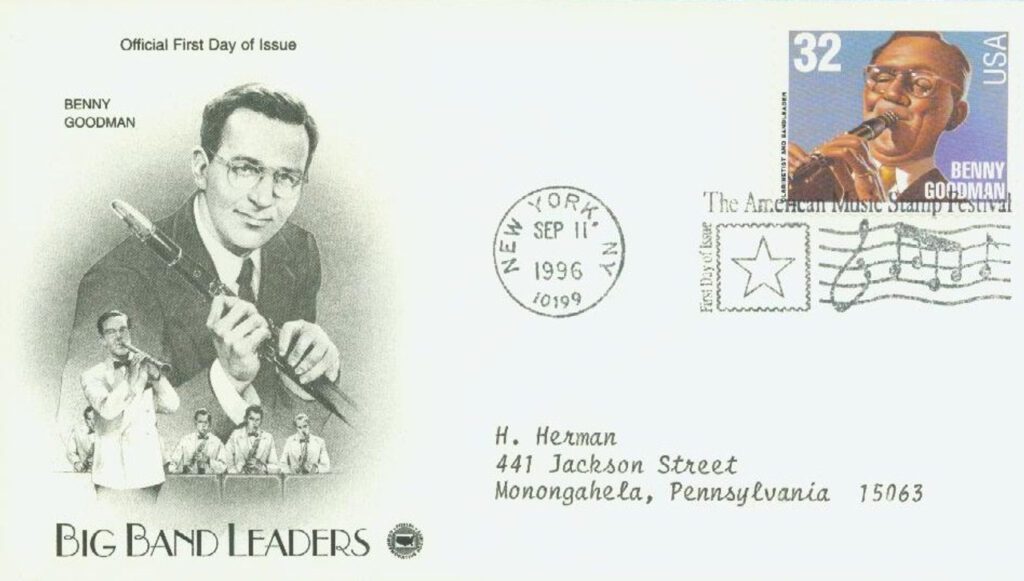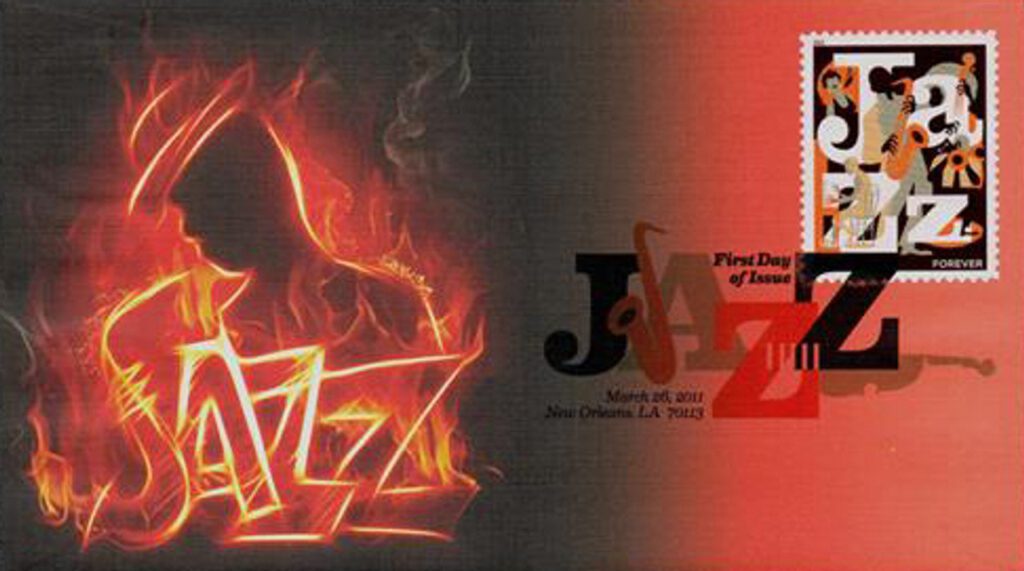Bandleader Benjamin David Goodman was born on May 30, 1909, in Chicago, Illinois.
The ninth of twelve children, Goodman came from a family of poor Jewish immigrants. When he was a child, his father would take the family to free concerts in Douglas Park to help give them appreciation for live music.
When Goodman was 10, his father enrolled he and some of his siblings in music lessons. Goodman then joined the band at the Hull House and had his first professional performance in 1921 at the Central Park Theater in Chicago. He then got his first union card at the age of 13 and began performing on Lake Michigan tour boats and in dance halls. Goodman did his first recordings in 1926.
Goodman eventually moved to New York City where he first found work as a session musician for radio and Broadway musicals, playing clarinet and saxophone. During this time, Goodman played with Glenn Miller, Tommy Dorsey, and Joe Venuti. In 1928, he and Miller wrote “Room 1411.” He first appeared on the charts with “He’s Not Worth Your Tears.”
Goodman was then signed to Columbia in 1934 and had a series of top ten hits including “Ain’t Cha Glad,” “I Ain’t Lazy, I’m Just Dreamin’,” “Ol’ Pappy,” and “Riffin the Scotch.” Goodman was then invited to play at the Billy Rose Music Hall, which led him to form his own orchestra. They recorded the number one hit “Moonglow” as well as other hits “Take My Word” and Bugle Call Rag.” Goodman then spent six months performing on the radio show Let’s Dance, and had six more top ten hits.
In August 1935, Goodman and his band had a three-week engagement at the Palomar Ballroom in Los Angeles. They played songs by Fletcher Henderson and Spud Murphy that got the crowds excited, leading to enthusiastic dancing. These performances are often considered to be the start of the Swing Era.
Goodman returned to Chicago and put on a series of successful and popular performances that earned him the nicknames “Rajah of Rhythm” and “King of Swing.” He then went to Hollywood to record another successful radio show. Then in January 1938, Goodman’s band played a sold-out concert at New York City’s Carnegie Hall. It’s considered one of the most significant jazz concerts in history, as it marked the time that mainstream audiences finally accepted jazz.
Until it disbanded in 1944, Goodman’s band was among the most popular of swing bands, and served as a springboard for the careers of trumpeter Harry James, drummer Gene Krupa, vibraphonist Lionel Hampton, and pianist Teddy Wilson. Orchestrations by Fletcher Henderson were especially noteworthy. Goodman was the first bandleader to feature interracial musical groups. His band appeared in a number of films throughout the 1930s and 40s including The Big Broadcast of 1937, Hollywood Hotel, Syncopation, The Powers Girl, Stage Door Canteen, The Gang’s All Here, Sweet and Low-Down, Make Mine Music, and A Song Is Born. Goodman was also the first jazz musician to achieve recognition as a soloist with symphony orchestras.
In the 1940s, Goodman explored bebop and found significant critical success. In the late 1940s, Goodman studied with clarinetist Reginald Kell and changed his playing technique, essentially re-learning to play the instrument he had played for 30 years from scratch. Goodman collaborated and commissioned works with classical composers such as Béla Bártok, Igor Stravinsky, Paul Hindemith, and Aaron Copland.
Goodman started a new band in 1953, and later led the first jazz band to tour the Soviet Union in 1962. Goodman continued to perform and record music until his death on June 13, 1986. Goodman received a Grammy Lifetime Achievement Award, a star on the Hollywood Walk of Fame, and was inducted into the Jazz Hall of Fame.
Click here to see what else happened on This Day in History.






Impressive list of achievements…